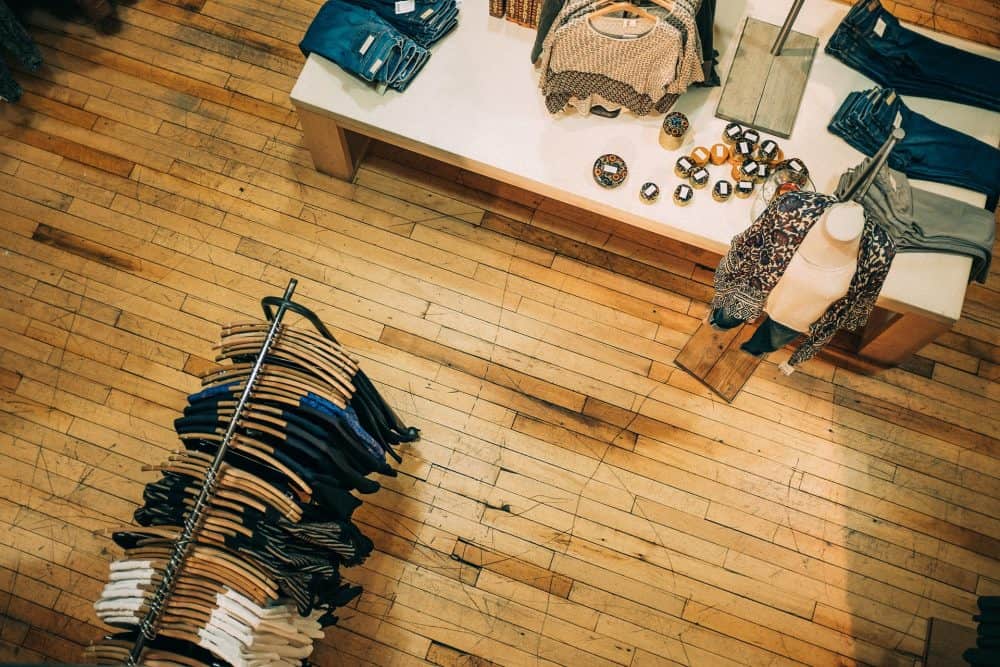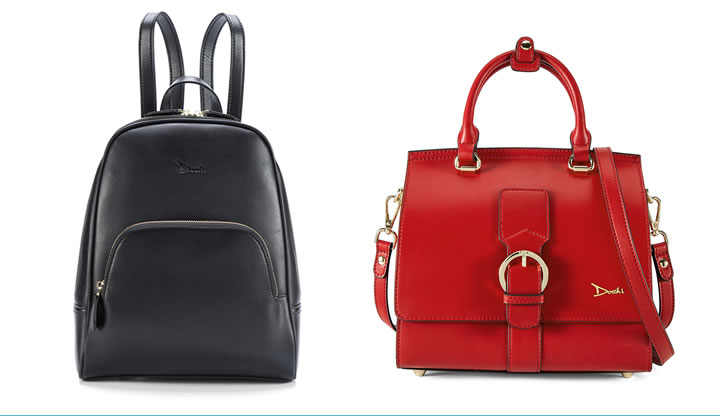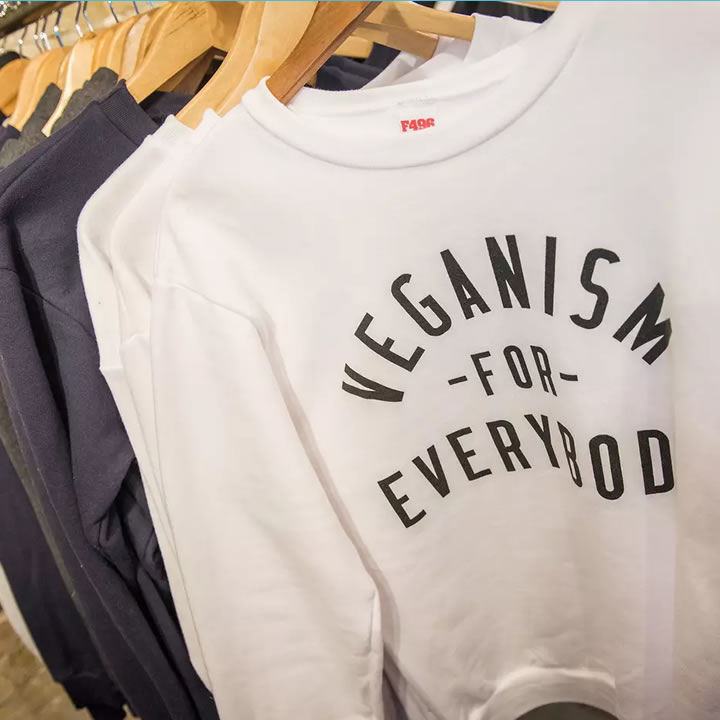People who adhere to the principles of vegetarianism or veganism do not make exceptions to the issue of choosing clothes, trying to eliminate components of animal origin. Ethical alternatives to wool and leather are more than enough.
But how to determine if your coats and shoes are really ethical? After reading the article, you will learn all about animal components in clothing and shoes and alternative materials.
What does ethical (or vegan) clothing mean?
So that clothes can be classified as ethical, they should not contain any components of animal origin. The basis of a vegan wardrobe is items made from plant materials and artificial materials obtained chemically. Those who also care about the environment should prefer herbal alternatives.
There are currently no special designations as to whether an item of clothing is ethical. Only a careful study of the composition indicated on the product label can help here. If after this there are doubts, contact the seller, or even better, directly to the manufacturer of the product you are interested in.

Vegan shoes
Shoes are marked with special pictograms indicating the material from which it is made. It can be leather, sprayed leather, textiles or other materials.
The designation will correspond to material whose content exceeds 80% of the total volume of the product. Other components are not reported anywhere.
Therefore, it is impossible to immediately determine whether the composition is really completely free of animal products, focusing only on labeling from the manufacturer.
Here, first of all, glue is worth mentioning. It usually consists of animal products and is used in large quantities in the manufacture of shoes. Vegan shoes do not necessarily mean leatherette: there are various options – from cotton and faux fur to cork.
Animal materials in clothing
- Leather is not a by-product of the meat industry (as many people think). 40% of slaughter worldwide occurs solely for animal skin.
- Fur. Animals used for fur are kept in terrifying conditions and are often still alive when they are skinned.
- Wool. Animals suffer not only when cutting. To prevent infection from meat flies, the so-called mulesing is carried out. This means that skin layers are cut off from the back of the body (without anesthesia).
- Cashmere is made from the undercoat of cashmere goats. Cashmere is an expensive material, the quality of which is high. Animals whose fur does not meet these requirements are usually killed. This fate befell 50-80% of newborn cashmere goats.
- Angora is the fluff of Angora rabbits. 90% of the material comes from China, where there are no laws governing the protection of animal rights. The procedure for obtaining fluff is carried out with a sharp knife, which leads to injury to rabbits when trying to break out. At the end of the process, the animals are in a state of shock, and after three months everything starts anew.
- Feathers of ducks and geese are mainly used.
- Silk. The silkworm weaves a cocoon of silk fibers. To make this fiber suitable for industrial use, living silkworms are boiled in boiling water. Behind one single silk blouse is the life of 2,500 insects.
- Horns. Sources of this material are hooves and horns of animals, beaks of birds.
- Nacre. The mother of pearl is obtained from mollusk shells. Pay attention to the buttons on your clothes – often they are made of horn or mother of pearl.
- Other materials. Textile dyes may contain cochineal carmine, animal charcoal or binders of animal origin.
In addition, many adhesives for shoes and bags contain animal components. For example, gluten glue consists of animal bones or skin. However, today manufacturers resort to synthetic glue, since it is insoluble in water.
The materials described above are not required for marking on the product. The most rational (but not always possible) solution is to ask the composition directly to the manufacturer.

Ethical Alternatives
- Cotton is the most common plant fiber. Cotton fiber is collected and processed into yarns, from which fabric is made. Bio-cotton (organic) is grown without the use of chemical fertilizers and pesticides.
- Hemp fabric. Cannabis sprouts are able to protect themselves, therefore, their cultivation does not use agricultural poisons. Hemp fabric repels dirt, is more wear-resistant than cotton and retains heat better. It is suitable for allergy sufferers and completely decomposes.
- Linen. Flax fiber needs very small amounts of chemical fertilizers. Linen fabric is cool to the touch and very durable. It has no lint and does not absorb odors as fast as everyone else. Fully degradable and recyclable.
- Soy silk. A by-product of the production of soy products. Visually indistinguishable from natural silk, while it is as warm and pleasant to the body as cashmere. Soy silk is durable. Biodegradable material.
- Viscose. Obtained from natural cellulose (bamboo, eucalypt or beech wood). Viscose is a pleasure to wear. Biodegradable material.
- Lyocell is a cellulose-based fiber. To obtain lyocell, other methods are used than for the production of viscose, which is more environmentally friendly. Often you can find lyocell under the brand name TENCEL. Biodegradable material, recyclable.
- Acrylic is consists of polyacrylonitrile fibers and resembles wool in its properties: it retains heat well, is pleasant to the body, does not wrinkle. Wash items from acrylic are recommended at a temperature not exceeding 40C. In the composition of clothing items most often you can find a mixture of cotton and acrylic.
- Polyester. In the manufacture of clothing, PET (polyethylene terephthalate) is mainly used. Its fibers are highly durable and practically do not absorb moisture, which is especially important for sportswear.
- Faux leather. It is a mixture of several textile materials coated with PVC and polyurethane. The use of artificial leather allows manufacturers to guarantee consistent product quality. It is cheaper than the natural and at the same time almost indistinguishable from it.
- Faux fur is the result of a laborious manufacturing process: polyacrylic threads are attached to a base consisting primarily of cotton and polyester. Visually the faux fur almost identical to natural.
Acrylic and polyester relate to ethical materials very conditionally: with each wash, microplastic particles fall into wastewater, and then into the oceans, where they pose a danger to its inhabitants and the environment. Therefore, it is better to give preference to natural alternatives.

Where are vegan clothes and accessories to be found?
It doesn’t have to be complicated to find vegan clothes and accessories. Search for herbal materials such as cotton, linen, and hemp. Synthetic materials, like leather, wool, and silk, are also animal-friendly solutions. Vegan clothing, shoes, and accessories are available from many mainstream brands–just keep your eyes on the label when shopping.
The vegan leather, including PVC (polyvinyl chloride), PU (polyurethane), may be made from a variety of natural fibers. PU isn’t vegan leather, actually.
Doshi FCSA (Fine Clothes Shoes and Accessories)
Doshi is a men’s and women’s vegan bags and accessories brand that makes beautiful, durable, and environmentally friendly products. Doshi focus is on vegan. Doshi uses a microfiber based vegan leather which is much more durable then PU and which feels like real leather. Doshi design products to be practical and useful. Doshi offers non-leather (vegan leather) handbags, women’s briefcases, women’s backpacks, vegan belts, vegan men’s wallets and other accessories. Doshi also plan to offer vegan shoes in 2020.
Doshi was founded to provide smart, fashionable and quality vegan products to people who have ethical, religious or environmental beliefs that lead them to seek vegan products.

